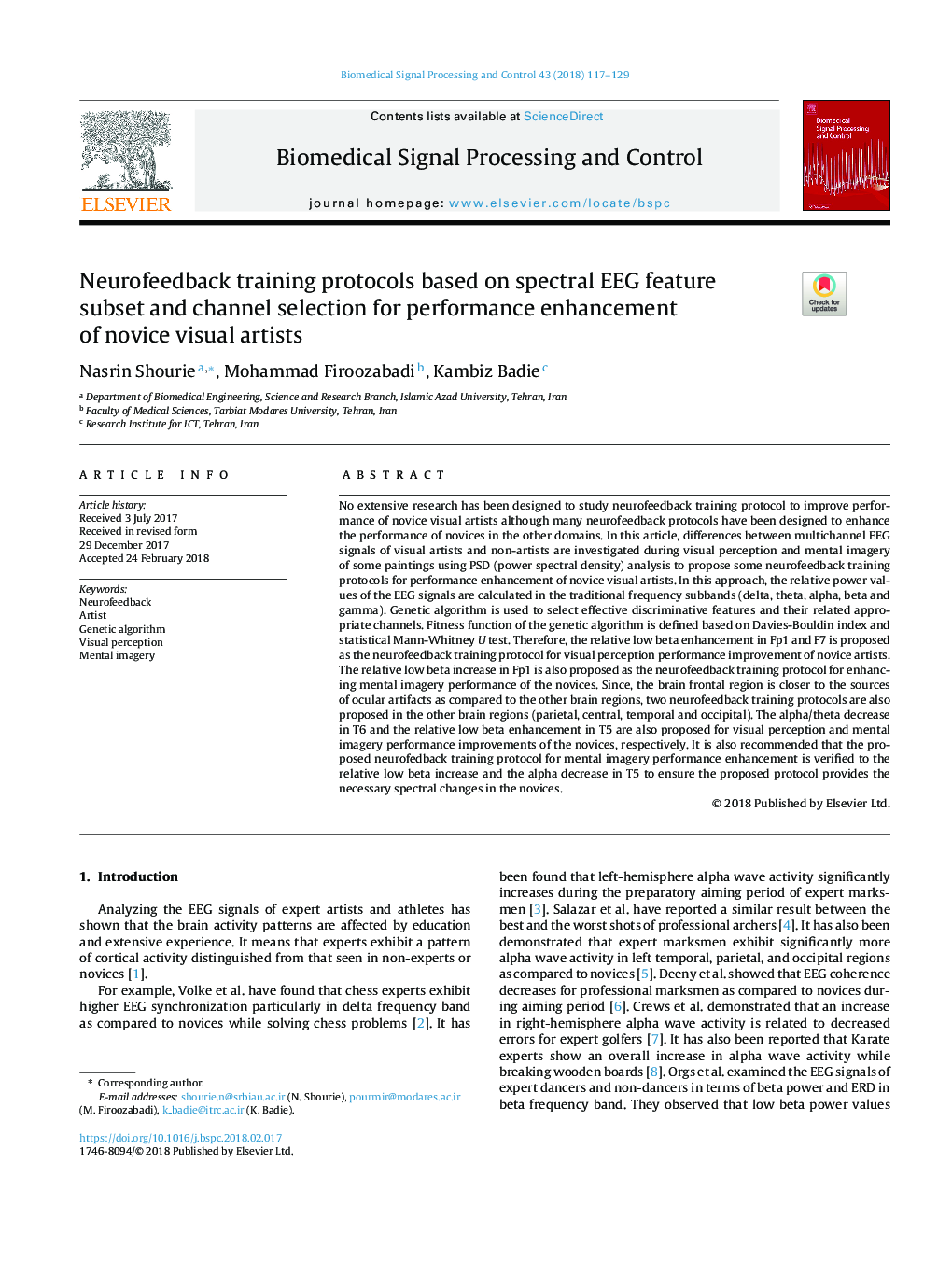| Article ID | Journal | Published Year | Pages | File Type |
|---|---|---|---|---|
| 6950833 | Biomedical Signal Processing and Control | 2018 | 13 Pages |
Abstract
No extensive research has been designed to study neurofeedback training protocol to improve performance of novice visual artists although many neurofeedback protocols have been designed to enhance the performance of novices in the other domains. In this article, differences between multichannel EEG signals of visual artists and non-artists are investigated during visual perception and mental imagery of some paintings using PSD (power spectral density) analysis to propose some neurofeedback training protocols for performance enhancement of novice visual artists. In this approach, the relative power values of the EEG signals are calculated in the traditional frequency subbands (delta, theta, alpha, beta and gamma). Genetic algorithm is used to select effective discriminative features and their related appropriate channels. Fitness function of the genetic algorithm is defined based on Davies-Bouldin index and statistical Mann-Whitney U test. Therefore, the relative low beta enhancement in Fp1 and F7 is proposed as the neurofeedback training protocol for visual perception performance improvement of novice artists. The relative low beta increase in Fp1 is also proposed as the neurofeedback training protocol for enhancing mental imagery performance of the novices. Since, the brain frontal region is closer to the sources of ocular artifacts as compared to the other brain regions, two neurofeedback training protocols are also proposed in the other brain regions (parietal, central, temporal and occipital). The alpha/theta decrease in T6 and the relative low beta enhancement in T5 are also proposed for visual perception and mental imagery performance improvements of the novices, respectively. It is also recommended that the proposed neurofedback training protocol for mental imagery performance enhancement is verified to the relative low beta increase and the alpha decrease in T5 to ensure the proposed protocol provides the necessary spectral changes in the novices.
Related Topics
Physical Sciences and Engineering
Computer Science
Signal Processing
Authors
Nasrin Shourie, Mohammad Firoozabadi, Kambiz Badie,
